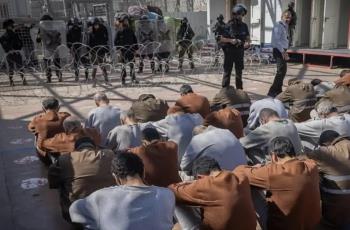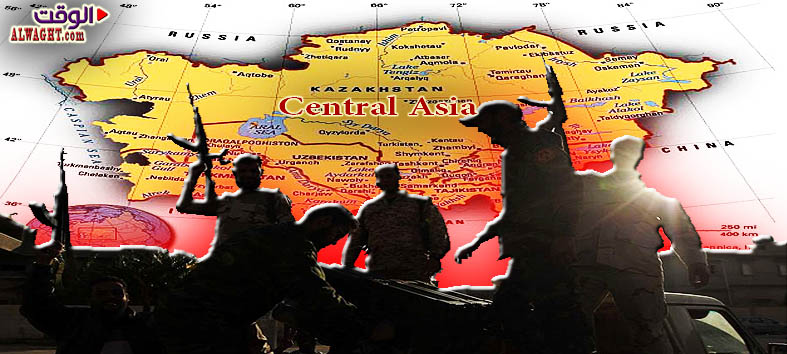Alwaght- At the moment Central Asia has two areas capable of triggering high-tensions; the first is the Fergana Valley, while the Northern Afghan borders with Central Asian countries, particularly Tajikistan and Turkmenistan represent the second area. Crisis in these areas threatens the security of Russia, China and Iran.
Fergana Valley is a region between Tajikistan, Uzbekistan and Kyrgyzstan. Several elements can raise the level of instability in this region including; the diversity of races in this region which are locked in historic conflicts with each other, high population density, the scarcity of land and water, religious extremist trends, inappropriate actions of governments, such as the Andijan massacre, activities of large-scale regional and trans-regional intelligence agencies, and border disputes.
Most Western experts believe that Russia is supporting the Islamic movement of Uzbekistan, in order to use it as a pressing tool to prevent Uzbekistan’s excessive orientation towards the west. Accordingly, Fergana Valley is considered the core of the U.S government’s preventive program for the future of Central Asia. Russians believe that the future of the Fergana Valley depends on the direction of Tashkent toward Russia or the West. If Uzbekistan chooses the second orientation, then the Fergana region will be transformed into an arena of confrontation between the East and the West, and a conflict similar to the Ukraine’s crisis will be triggered. Perhaps this explains the words of the U.S Assistant Secretary of State during the delivery of 328 armored vehicles to Uzbekistan, when he said that Uzbekistan need this equipment to combat terrorism and drug trafficking.
On the contrary, the Russians are concerned about the Tajik-Afghan borders. The Russian Ambassador to Tajikistan “Igor Lyakin Frolov” considered the Tajik-Afghan border as an area within the limits of the Collective Treaty Organization, and exposed to threat of terrorism. Lyakin Frolov added that Moscow would not spare any effort to keep these borders stable. In the meantime, there are about 5 thousand radical militants on the border with Tajikistan, and about two thousands of ISIS followers are on the borders with Turkmenistan. At the present, provinces of Kunduz, Baghlan, Faryab, Sarbel and Jowzjan have turned to become regions for terrorists’ recruitment. Now, radical militants are being imported from Tajikistan, Uzbekistan, the North Caucasus, Saudi Arabia and Pakistan to these provinces.
Perhaps for this reason, Russian President Vladimir Putin said in the Collective Security Treaty Organization’s meeting in Moscow: “the current situation causes concerns. The units of the so-called ISIS appear which aspire to include some provinces of Afghanistan into the so-called “Islamic Caliphate”. The terrorists and extremist groups are trying to spread their activity to Central Asia. In these conditions, the CSTO countries should be ready to take appropriate, preventative measures.” Putin stressed that the Tajik-Afghan borders should be the first priority, and requested financial and technical assistance to Tajikistan to modernize its armed forces.
Putin said the CSTO countries should pay attention to securing the border between Tajikistan and Afghanistan. Tajikistan’s Presidents Emomali Rahmon echoed Putin’s comments, requesting assistance from his fellow CSTO member states.
After inspecting the Russian base in Tajikistan, the Russian Deputy Minister of Defense “Anatoly Antonov” considered the Tajik defense capability as part of Russia’s security, stressing that Tajikistan’s stability and the strength of its armed forces ensure the security of Moscow. Antonov assured that the Russian authorities have issued orders to take all actions and measures quickly to strengthen the Tajik armed forces more and more.
In conjunction with these Russian moves, ISIS appointed a new head and recruited a leadership council of 12 members of what so-called “Khorasan state”. This group announced that it had mobilized 10 thousands of armed militants on the borders between Afghanistan and Pakistan. It seems that Khorasan terrorist group had been preparing for an attack on the historical land of Khorasan, which includes from the standpoint of the terrorist organization ISIS; Pakistan, Afghanistan, the north and the east of Iran, the five countries of Central Asia, and Western China and India.
Both Pakistan and Afghanistan consider the news about ISIS’s movements and efforts in the region are just foreign countries’ propaganda. Regarding Central Asia governments, no responses were issued to that, whereas Uzbekistan has called the Commonwealth of Independent States for assistance to secure the borders of Tajikistan and Turkmenistan.
Uzbekistan supports the U.S project in the region, based on an unwritten agreement. Recently, the Uzbek National Security agency announced that there are evidences suggest that ISIS will carry out several terrorist acts in Uzbekistan in the spring of 2015, calling for securing the borders between Tajikistan and Kyrgyzstan. It seems that Khorasan group’s route to the oil and gas fields in Kazakhstan and Russia passes through Turkmenistan and Tajikistan. Given the current situation in the aforementioned central tension areas, we can predict the future of strong regional and trans-regional alliances, in terms of the employment of extremism in Central Asia.



























